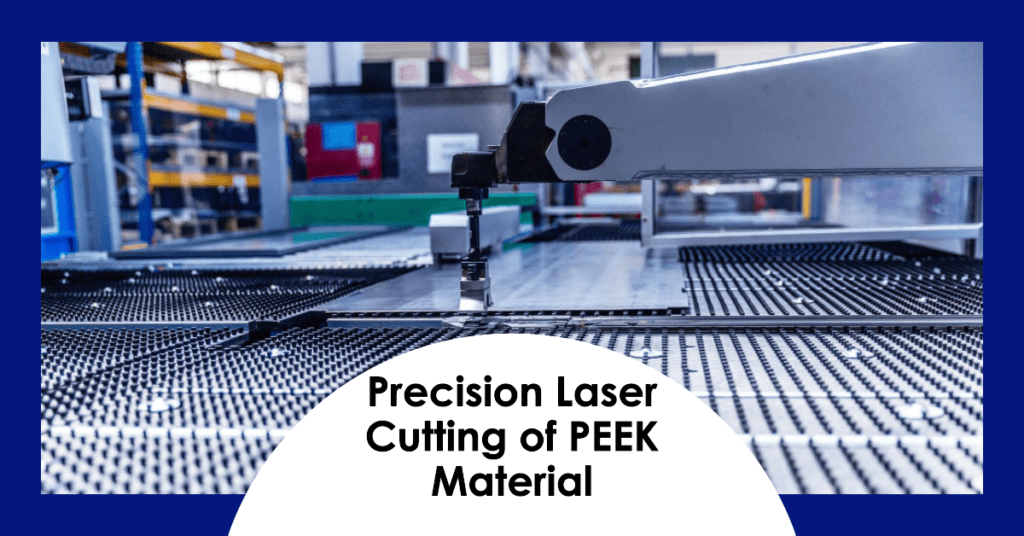
Polyether Ether Ketone, commonly known as PEEK, is a widely used polymer in high-performance applications. It is renowned for its exceptional strength-to-weight ratio and its resilience under challenging environments. Combine this extraordinary polymer with the precision of laser cutting technology, and we have a recipe for manufacturing marvels. Whether in the aerospace sector or the intricate realms of biomedical applications, laser cutting parts are components that push boundaries, ensuring durability and high performance.
This article delves deep into the world of PEEK, how laser cutting enhances its properties, and the various applications that benefit from this synergy.
PEEK: The High-Performance Polymer
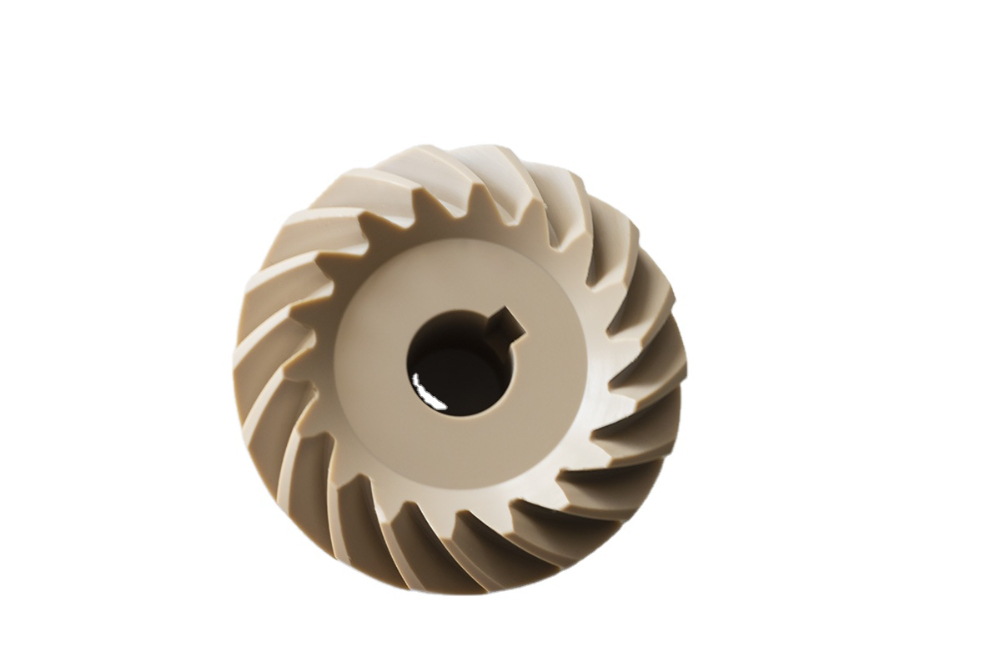
Peek Part
With its advanced attributes, PEEK stands out in the crowded family of thermoplastic polymers. Let’s break down why this material has captured the attention of numerous industries:
1. Chemical Composition
PEEK is a high-performance polymer with a unique aromatic polymer backbone and high thermal stability. It also has ether and ketone groups, contributing to its high resistance to solvents and chemicals.
2. Mechanical Properties
PEEK boasts an impressive tensile strength, making it suitable for applications that demand a combination of lightweight and durability. Unlike other high-strength laser cutting materials, PEEK retains flexibility, making it versatile across various applications.
3. Thermal Properties
PEEK’s high melting point, around 343°C (649°F), makes it a prime choice for high-temperature applications. Even under continuous use, PEEK can function efficiently at temperatures up to 260°C (500°F).
4. Resistance Attributes
It’s resistant to both organic and aqueous environments. This means PEEK components don’t degrade easily when exposed to most chemicals. Also, PEEK can resist gamma and UV radiation, which is crucial for space and specific medical applications.
5. Biocompatibility: Due to its inert nature, PEEK is biocompatible. It’s often used in medical implants as it doesn’t cause adverse reactions in the human body. Furthermore, it has excellent electrical insulating properties, even at high frequencies, making it valuable in electronic applications.
Table: Key Physical and Mechanical Properties of PEEK
| Property | Value/Characteristic |
|---|---|
| Melting Point | Approx. 343°C (649°F) |
| Continuous Use Temp. | Up to 260°C (500°F) |
| Tensile Strength | High |
| Flexibility | Moderate |
| Electrical Insulation | Excellent at high frequencies |
Related: CNC Machining of PEEK
Basics of Laser Cutting
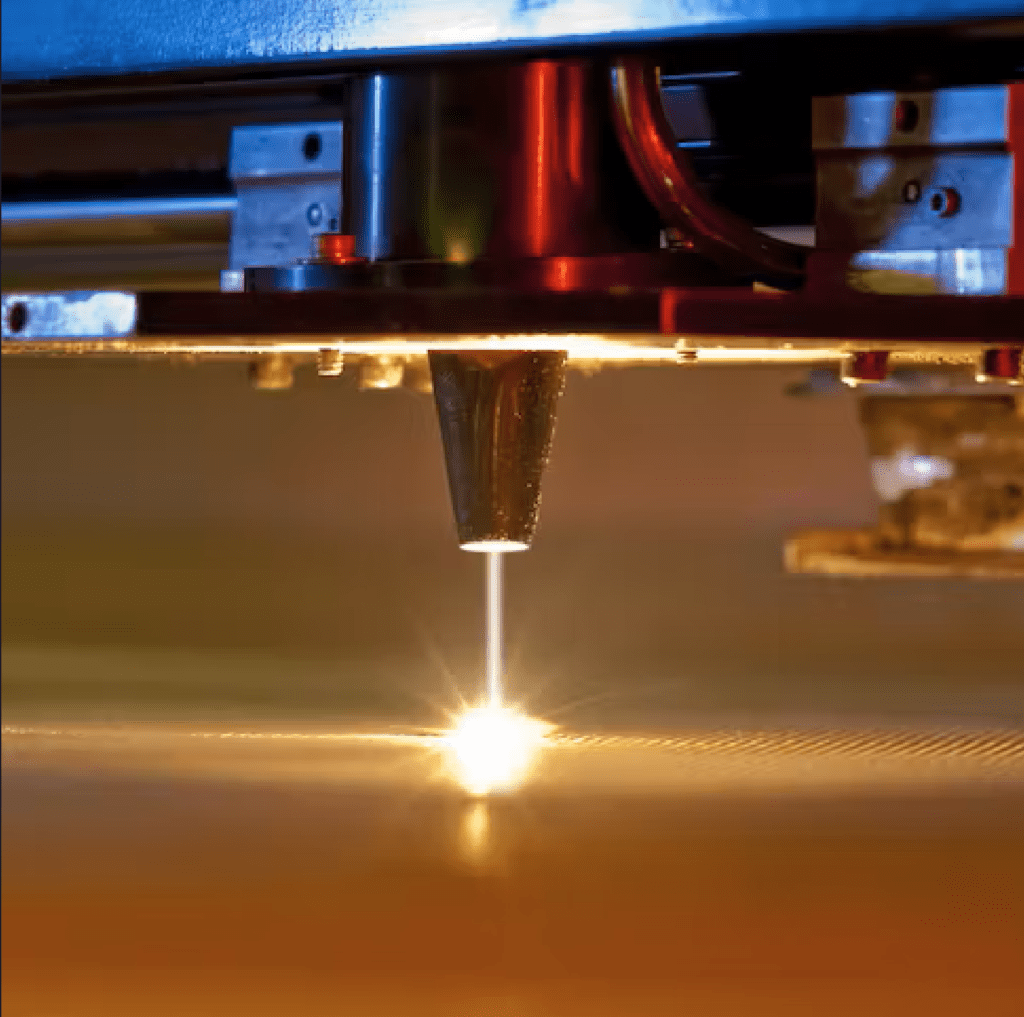 Material fabrication has experienced leaps and bounds of advancements, with laser cutting emerging as a pinnacle of precision and efficiency. Intricate shapes and designs can be cut out with high precision and minimal waste using a focused laser beam to melt, burn, or vaporize materials.
Material fabrication has experienced leaps and bounds of advancements, with laser cutting emerging as a pinnacle of precision and efficiency. Intricate shapes and designs can be cut out with high precision and minimal waste using a focused laser beam to melt, burn, or vaporize materials.
How Laser Cutting Works?
The principle of laser cutting is straightforward:
- Laser Generation: A laser cutter produces a beam using gain medium, which can be a gas, liquid, or solid. This medium is excited by external energy, typically electricity or light.
- Beam Focusing: The laser beam is directed and focused onto the material’s surface using mirrors and lenses. This focus ensures the laser’s energy is concentrated over a tiny area, creating the necessary heat to cut the material.
- Material Interaction: The concentrated beam interacts with the material, causing it to melt, burn, or vaporize. An assist gas often blows away the melted material, leaving a clean edge.
Table: Basic Components of a Laser Cutter
| Component | Function |
|---|---|
| Gain Medium | Produces the laser through the excitation of its atoms or molecules. |
| Mirrors | Direct the laser beam toward the material. |
| Focusing Lens | Focuses the laser beam to a tiny spot on the material’s surface. |
| Assist Gas | It helps in removing melted material and keeps the cutting area clean. |
Related: Laser Cutting Sheet Metal
Types of Lasers Used in Cutting
Lasers are used for various materials and applications, and different types are best suited for different tasks. For example, Co2, fiber, and Nd: YAG lasers are commonly used in industry.
1. CO₂ Lasers
CO₂ lasers are a type of gas laser that is highly effective at cutting, boring, and engraving various materials. These lasers use a mixture of carbon dioxide, nitrogen, and helium gases to produce a high-powered beam of light ideal for precise manufacturing applications.
2. Fiber Lasers
These lasers offer higher speed in comparison of Co2 laser vs fiber laser. The fiber lasers are solid-state lasers that use amplified light to cut through metal with unparalleled precision. These lasers have become increasingly popular in recent years due to their high cutting speeds, low maintenance requirements, and ability to cut through a wide range of metals and alloys.
3. Nd: YAG Lasers
Nd: YAG lasers, made from neodymium-doped yttrium aluminum garnet, are crystal lasers used for welding and cutting applications. While they may not be the best choice for every situation, they offer unique benefits, such as their ability to be used with various materials and their versatility in many industrial settings. In addition, these lasers are known for their high efficiency, low maintenance requirements, and ability to produce high-quality welds and cuts.
Laser cutting advantage of precision allows for intricate cuts and designs with tight tolerances, rapid cutting of PEEK compared to traditional sheet metal cutting methods, versatility in cutting various materials, including metals, plastics, and polymers like PEEK, clean edges with minimal burring, and low heat affected zone (HAZ) due to the precision of the laser, which ensures minimal thermal distortion of the material.
Factors Affecting Laser Cutting Quality
The quality of laser cutting is affected by several factors, including laser power, cutting speed, assist gas type and pressure, and focus spot size. Higher laser power results in faster cuts, which may increase the heat-affected zone (HAZ). If the cutting speed is too high, the cut may not penetrate entirely, while if it’s too slow, it may cause excessive melting. Different gases, such as oxygen, nitrogen, and air, affect the cutting process, and their pressures must be optimized. The size of the laser’s focus also affects the cut’s width and quality.
The Technical Aspects of Laser Cutting PEEK
Laser cutting offers many advantages over conventional methods when it comes to precision cutting of this robust polymer. Let’s delve into the technical intricacies defining the laser cutting process of PEEK.
PEEK is thermally stable and resists degradation at high temperatures. This makes it compatible with the heat involved in laser cutting. However, understanding its behavior under the laser’s influence is crucial for achieving precise cuts:
- Melting Point: PEEK has a melting temperature of around 343°C. Laser parameters should be adjusted accordingly.
- Thermal Conductivity: PEEK’s low thermal conductivity means the heat-affected zone is limited, reducing potential damage to surrounding areas.
Laser Parameters
Laser cutting PEEK requires careful consideration of laser parameters to ensure precision and minimize material wastage. The three key parameters that affect the precision of the cut are power, speed, and frequency.
To achieve the desired precision, the laser’s focal point must be accurately set, and gas like nitrogen or air must be used to prevent flaming and ensure a cleaner cut. Laser-cut PEEK components offer several advantages, such as minimal waste, smooth and clean edges, and the ability to produce intricate designs.
Table: Typical Laser Cutting Parameters for PEEK
| Parameter | Typical Setting | Note |
|---|---|---|
| Power | 60- 80 watts | Adjust based on thickness and desired finish |
| Speed | 1 meter/minute | Faster speeds may result in rougher finishes |
| Frequency | 2 kHz | High frequencies can yield smoother edges |
Challenges and Precautions
While laser cutting PEEK offers numerous advantages, there are challenges to be mindful of, such as overheating and material thickness.
- Overheating
PEEK’s low thermal conductivity can cause localized overheating, leading to unwanted melting or warping. To avoid this, it is recommended to use cooling mechanisms or lower laser power settings and perform multiple passes.
- Material Thickness
Very thick sheets may require multiple passes or adjustments to laser parameters. It is important to note that increasing the number of passes can cause increased heat buildup, leading to further issues such as warping or melting. Therefore, using a lower laser power setting and performing multiple passes or adjusting the laser parameters is recommended to avoid these issues.
Applications of Laser-Cut PEEK
PEEK, or polyether ether ketone, is renowned for its superior mechanical and thermal properties, making it a sought-after material in industries that demand high-performance polymers. Coupling this with the precision of laser cutting, the potential applications for laser-cut PEEK are vast and varied.
1. Medical and Biomedical Devices
PEEK is commonly used in the medical field because of its biocompatibility, sterilizability, and chemical resistance.
Due to its biocompatibility, PEEK is used to manufacture spinal and other orthopedic implants. Laser-cut PEEK ensures precision and the perfect fit for these implants. Laser-cut PEEK components are robust, chemical-resistant, and easy to sterilize, making them ideal for surgical tools.
2. Aerospace and Automotive Industries
The demand for lightweight, strong, and thermally stable materials is high in the aerospace and automotive sectors. Laser-cut PEEK components are ideal for aircraft exposed to high temperatures and various car components due to their strength at high temperatures, durability, and resistance to automotive chemicals.
3. Electronics Industry
PEEK’s dielectric properties and resistance to radiation make it a primary choice for electronic applications. Laser-cut PEEK is used for electronic applications, specifically for precision insulating components and exact shapes for electronic connectors and housings to ensure a perfect fit and protection.
4. Oil and Gas Industry
The oil and gas sectors demand materials that can withstand extreme conditions, from high pressures to aggressive chemicals. PEEK’s chemical resistance and strength make it ideal for seals and gaskets in the oil and gas sector. Laser cutting ensures these components meet exact specifications. Additionally, it is suitable for valve components that need to withstand high pressures and temperatures
5. Industrial Machinery
Laser-cut PEEK parts are applicable for industrial machinery components that require low friction, high wear resistance, and precise dimensions. Bearings and slides benefit from PEEK’s low friction and high wear resistance, while gears benefit from its exceptional strength and durability.
Precision in PEEK Laser Cutting
In the realm of manufacturing and engineering, precision is paramount. When dealing with PEEK—a high-performance polymer—the importance of precision becomes even more pronounced, especially when considering the complexity and criticality of the applications where PEEK is used. With its high accuracy and minimal waste, laser cutting has become the preferred method for cutting PEEK. Here’s why:
1. Intricate Designs and Tight Tolerances
PEEK is often used in industries requiring intricate designs and tight tolerances. Laser cutting allows for exceptionally detailed patterns without compromising the material’s integrity.
- Medical Devices: PEEK’s use in medical devices like orthopedic implants necessitates precise dimensions to ensure patient safety and device efficacy.
- Electronics: Even a slight deviation can result in component failure in electronics. The precision of laser-cut PEEK ensures components fit perfectly within intricate electronic assemblies.
2. Minimal Material Wastage
Traditional cutting methods can lead to significant material wastage, but laser cutting is known for its efficiency. Given the cost of high-performance materials like PEEK, minimizing waste can lead to significant savings. Also, reducing waste aligns with green manufacturing principles, promoting sustainability in production.
3. Edge Quality
Laser cutting offers superior edge quality compared to other methods. The laser’s precision results in smooth, burr-free edges, eliminating the need for post-processing in many cases. Unlike some cutting methods that can weaken the material at the cut, laser cutting preserves the inherent strength of PEEK.
5. Consistency and Repeatability
Consistency is critical in industries such as aerospace or medical, where every component must meet strict standards. Laser cutting ensures consistent results, with every cut being as precise as the last, ensuring uniform quality across components and batches. The automated nature of laser cutting also ensures high repeatability, which is crucial for mass production scenarios.
PEEK CNC Machining Tolerances
PEEK is renowned for its mechanical properties, making it an ideal candidate for CNC machining. Achieving precise tolerances ensures component performance and fit, especially in high-demand applications.
Table: PEEK CNC Machining Tolerances
| Feature | Typical Tolerance (mm) | Tightest Tolerance (mm) |
|---|---|---|
| Linear Dimensions | ±0.05 | ±0.01 |
| Hole Diameter | ±0.03 | ±0.005 |
| Angular Dimensions | ±0.5° | ±0.1° |
| Surface Finish (Ra) | 1.6 | 0.5 |
| Flatness | ±0.02 | ±0.005 |
| Perpendicularity | ±0.02 | ±0.005 |
| Parallelism | ±0.02 | ±0.005 |
| Roundness | ±0.03 | ±0.01 |
| Cylindricity | ±0.03 | ±0.01 |
| Concentricity | ±0.03 | ±0.01 |
| Profile of a Surface | ±0.05 | ±0.01 |
(Note: These values are indicative and may vary based on the machine and specific task requirements. Always consult with the CNC service provider for exact tolerances.)
Prolean PEEK Laser Cutting Services: Precision and Perfection
Prolean is a beacon of quality and precision in CNC machining and fabrication services. The company’s foray into PEEK laser cutting has not only furthered its reputation but also added a modern dimension to its wide array of services. Let’s delve into the specifics of what Prolean offers in PEEK Machining.
Table: Snapshot of Prolean’s PEEK Laser Cutting Services
Our laser cutting servicesexemplify the convergence of expertise, cutting-edge technology, and commitment to quality. Prolean emerges as a one-stop solution for those needing precision-cut PEEK components, assuring reliability and excellence at every step of the way. So, request the laser cutting quotes.
Conclusion
Laser cutting PEEK is a monumental stride in modern manufacturing. This synergy between the high-performance polymer, PEEK, and the pinpoint precision of laser technology heralds an era where intricate designs meet unmatched durability. PEEK’s remarkable attributes, such as thermal stability, chemical resistance, and biocompatibility, combined with the accuracy of laser cutting, make it the gold standard for many sectors, from aerospace to medical devices. Additionally, the laser-cutting process minimizes material wastage, promotes sustainability, and ensures consistency, which is crucial for industries that require strict standards. As technology progresses, the fusion of PEEK and laser cutting will continue to redefine boundaries, offering innovative solutions to complex challenges.
FAQs
What is PEEK?
PEEK, or Polyether Ether Ketone, is a high-performance polymer known for its exceptional strength-to-weight ratio and resilience under challenging conditions.
Why is laser cutting suitable for PEEK?
Laser cutting offers precision, minimal waste, and preservation of PEEK’s inherent strength. Its capability to produce intricate designs with tight tolerances makes it ideal for cutting PEEK.
What are the advantages of using PEEK in the medical field?
Due to its biocompatibility, PEEK is used in medical implants, ensuring patient safety and device efficacy. Its chemical resistance and sterilizability make it ideal for surgical tools.
How does laser cutting work?
Laser cutting uses a focused laser beam to melt, burn, or vaporize materials. This results in intricate shapes and designs being cut out with high precision and minimal waste.
What are the typical challenges in laser cutting PEEK?
Overheating due to PEEK’s low thermal conductivity and issues related to material thickness are common challenges. Adjusting laser parameters and using cooling mechanisms can mitigate these.
How is PEEK utilized in the electronics industry?
PEEK’s dielectric properties and radiation resistance make it suitable for precision insulating components and specific shapes for electronic connectors and housings.


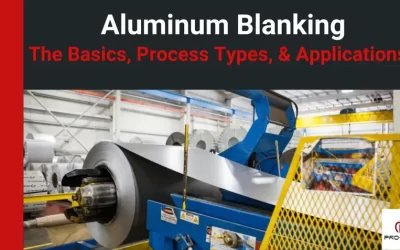
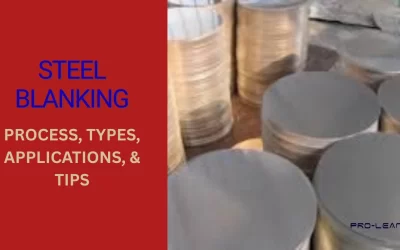
Can you be more specific, How to avoid heat affects during cutting PEEK plastic with laser?
Meera, here are the 5 straight points on How to avoid heat affects during cutting PEEK plastic with laser? Optimize Laser Parameters: Adjust laser power, pulse duration, and repetition rate to minimize heat buildup.
Use Coolant or Air Assist: Employ a coolant or air assist system to dissipate heat and prevent material overheating.
Control Cutting Speed: Maintain an optimal cutting speed to balance material removal and heat generation.
Consider Multiple Passes: Divide cutting into multiple passes to reduce heat accumulation per pass.
Ensure Proper Ventilation: Adequate ventilation helps remove smoke and fumes, preventing heat buildup and maintaining cutting quality.